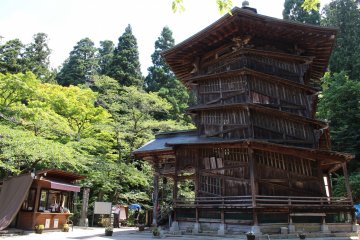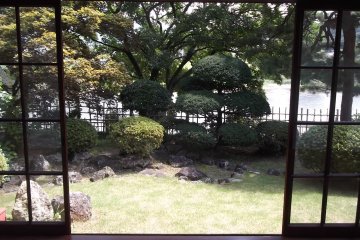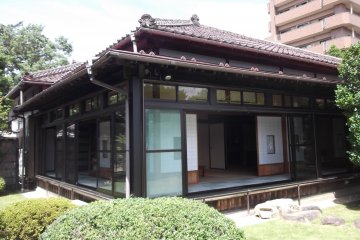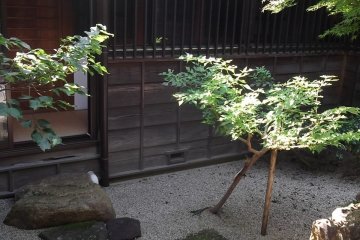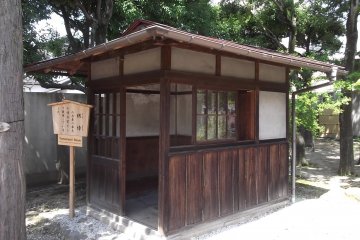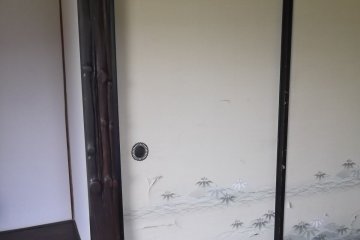The name Fukushima may be overshadowed by the disaster of 2011, but it's definitely a pleasant place to visit, and shouldn't be avoided. I stayed in Fukushima city for a couple of nights one summer, and for me, the pick of its few central sights was Ogura-tei, definitely worth seeking out.
In the Edo era (1603-1868), this part of the city was home to a riverside trading post, with warehouses and granaries lining the banks of the Abukuma river. Then as the economy developed rapidly after the Edo era, the Bank of Japan opened its first branch in Tohoku in 1899, and this residence was built in 1927 for its manager.

It's constructed in a mix of traditional and modern style, typical of the time. It's a single-story wooden building, laid out around a small inner courtyard, arranged so that most of the rooms look out over the garden and river. Many of the rooms are of Japanese style, with tatami mat floors, sliding screen doors, and carved wooden ventilation panels below the ceilings.
Throughout the house there are panels giving interesting nuggets of information about its history in English. For example, one of the western-style rooms was previously Japanese, but was remodeled for use by an American lieutenant, who actually shared the residence with the bank manager for some years following World War II.

The building is beautifully preserved, really giving us a flavour of what it was like to live there at the time, with a handful of interesting design features. On some of the interior passages there are artfully structured bamboo screens, allowing us to see out while people outside aren't able to see in.





